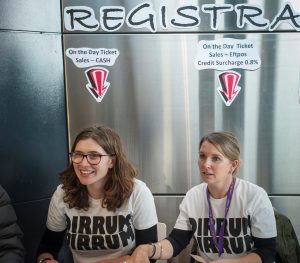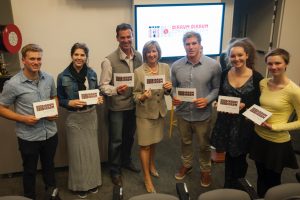H for History
H4H #23: For the Common Good
Dirrum through the years - There are very few places on the planet you would find something quite like the Dirrum Festival
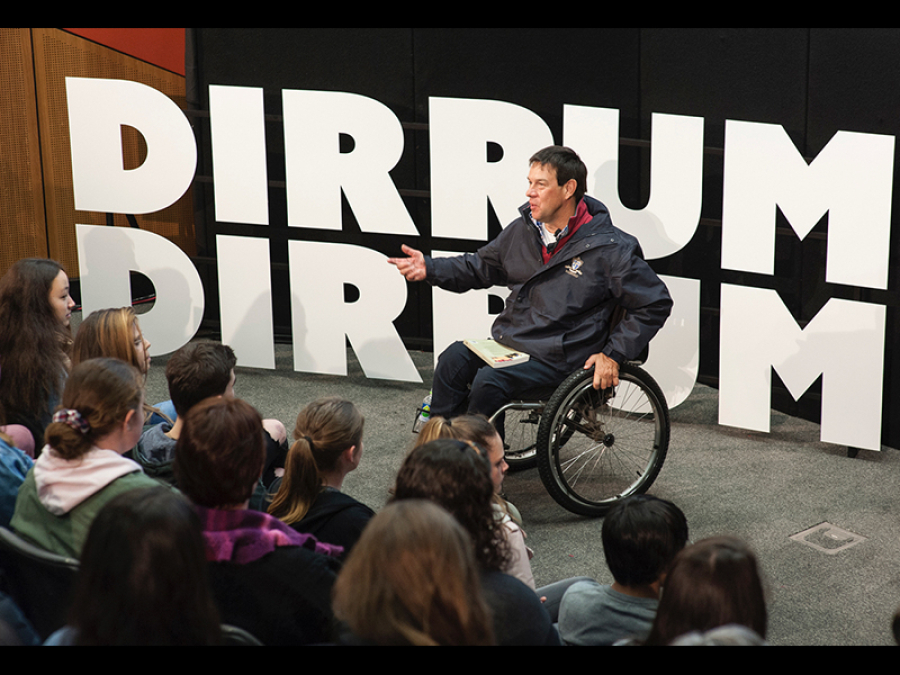
There are very few places on the planet you would find something quite like the Dirrum Festival: a student-led conference, now in its sixth year, featuring some inspirational and often high-profile speakers, gathering from places as near as the Radford quadrangle to as far as a Southern Somalian prison. As 2018 Committee member, Annie Creer, acknowledges: “Not only are we lucky enough to learn from what people have done on a national scale, but what people are doing to make a positive impact from inside these walls.” She points to her Year 12 peer, Oliver Golding, who “at the age of 17, has created his own brand, Ur.Sain, combining not only fashion, design, but also ethics. His story is one of the many involving students who are taking action for the common good.”
Past speakers have included activists, adventurers, aid workers, artists, authors, Young Australians of the Year, bishops, capoeristas, CEOs, collegians, commissioners, crown prosecutors, dads, dancers, environmentalists, ethicists, farmers, First Ladies, hostages, journalists, mums, musicians, quadriplegic pilots (see main photo, Sam Bailey), refugees, scientists, theologians, tram drivers, TV personalities, Wallaby captains, whistle-blowers, and youth workers, to name but a few. Surrounding the festivals have been art installations, book releases (including a Treasury of Sayings and a picture book for Timor-Leste, that has been adopted into their curriculum by their Ministry of Education), flaming giants, food and fashion stalls, formal and informal gatherings in corners, leadership training, raves, rock concerts, workshops and literally thousands of paper boats decorating Lake Ginninderra to make a powerful visual statement about community building and reaching beyond borders.
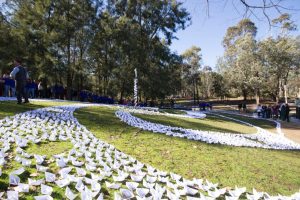
Six years ago, Fr Richard Browning had been working on shaping the College’s values and was seeking an activity to intentionally, perhaps profoundly, give expression to them. Reflects Richard, “The values which we so easily name now – Truth, Compassion and Wisdom – were more passive when I arrived at Radford. They seemed to be more like a motto than guiding values.” Wanting his community to respond to an inherent call to action implied in these values, the yet-to-be-named Dirrum concept was born. Fr Richard’s vision was characteristically large scale: “From David Mulford’s time, I pushed for some kind of public theology centre. When Phillip Heath came, he asked me to lead what he called The Centre for Values, Ethics and Compassion. This is where it began.”
“The name had to reflect Radford’s values,” explains Fr Richard. “It had to be from the land and language upon which Radford is built. So it had to be Ngunnawal. I spent time with a Ngunnawal elder from Yass, the remarkable Eric Bell. We had to have permission to bring the word to life, rather than take it over and colonise it. But finding the word was hard. The word had to point beyond particularity to the universal, and a deeper truth. ‘Dirrum Dirrum’ is the sound of red in Ngunnawal. It is the colour of the earth – the bottom half of the Aboriginal flag – and is also the colour of the blood that flows beneath the skins of every colour.” Interestingly, in researching Lewis Bostock Radford, after whom our school is named, I came to uncover the etymology of his name in his biography*: The ‘Rad’ part “has its (Midlands) origins to mark the place where the crossing over the River Trent is red … The “-ford” part is derived from the Anglo-Saxon “faren” : to travel, and appears from early times to have had the meaning ‘crossing’.” Given Radford’s predilection for maroon and Dirrum’s aim to cross borders, this was all serendipitous, to say the least. [* Paul Radford, A Scholar in a New Land: Lewis Bostock Radford, 1979.]
The central activity to have emerged from the early dreamings of the ‘centre’ is what has now become known as the Dirrum Festival. “This was the quickest, most effective way of initiating something that was real, meaningful and likely to lever a greater momentum,” says Fr Richard. “The Dirrum Festivals address all three elements of leadership, ideas and action. If the enterprise was fair dinkum, then it had to include students from the beginning, not just in the end.” And it has certainly done so with gusto, with close to 70 leaders having been involved in the Festival’s coordination since inception.
As for the format of the Festival, Fr Richard elaborates that “we used to run events in parallel, a speaker ‘conference’ and in the evening a more informal student speaker session. We learnt very quickly that a three-minute student voice could stand alongside a twenty-minute world class speaker and be transformative.” Perhaps unfairly, I ask him which speakers have been a highlight to him over the years. “Every year there is gold,” he responds. “It will differ according to the hearer…”
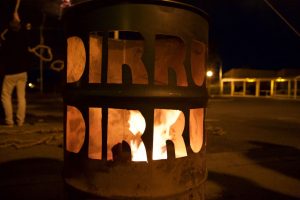
“Personally, I find myself repeating different portions of speaker’s talks from across the years, from Paul Porteous to Valerie Browning to David Pocock to Akram Azimi. It is like I have eaten what has been said and portions have actually become me. I can repeat many of the speaker’s aphoristic gems. But what is more compelling is the life they have lived. The point of the festival is not a smorgasbord of sweet do-gooder sugar. It is a greater authenticity in being and acting with generosity and power. Oddly, it is sometimes the ‘lesser luminary’ speaker who really cuts through.”
So, of the students who have spoken, who did he think cleanly hit the mark? “I think Henry Miller’s short talk (text below) on crossing the divide that exists between mainstream and indigenous education was pretty memorable. For a lad that had not previously used a lot of words, it was remarkable!”
I share Richard’s enthusiasm for Henry’s speech, which came hot on the heels of Matt Pye’s challenging address in 2014 about the Crossing The Divide program which he founded, an initiative designed to give rural youth – many of whom were Indigenous and struggling with traditional education pathways – a second chance at education and life in general. See https://www.youtube.com/watch?v=FRWfFgk6dqY
“But pick any student who has spoken about their Dirrum Challenge,” continues Fr Richard, “and the work of being who they are in response to a need within the community. This is always impressive.”
Annie Creer’s Dirrum memories are similarly enthusiastic. “Four years ago, I first went to Dirrum. Immediately, I was captivated by the power, the sincerity and the honesty in the words of people I had never met. Four years ago, I saw what it was like for people to put their values and their stories into action. In just 20 minutes, I was given an insight into a world I had never seen or known before.”
While the themes have subtly morphed over the years, 2018’s “For the Common Good” seems to be the one that the Festival has been shaping towards for over half a decade, and which encapsulates the spirit of what goes on when the doors literally and figuratively fly open. While many older attendees at Dirrum have had their eyes opened, thoughts challenged and spirits lifted, it is surely the young, tomorrow’s movers and shakers towards a better future, who have the most to gain from what Dirrum humbly and genuinely offers. As Annie Creer reminds us: “Dirrum is not a lecture, a sermon or a monologue, but a way in which you can learn and be inspired by the values and actions of others. So, come and be overwhelmed. Come and be challenged. Come and learn that the world is much bigger than you thought.”
“Young people need to be witnessed caring and acting,” concludes Father Richard. “Young people need to be believed in and trusted. Young people need to know that shouting at the darkness or just sitting down in a corner is easy, and that lighting a match is sometimes the most difficult and radical thing to do.”
Fr Richard: “Whilst the theme remains ‘for the common good’, two elements help give flesh to this. They are ‘truth-telling and power’ and ‘shared sustainable prosperity’. This has given the organising students of 2018 a terrific focus to build around.”
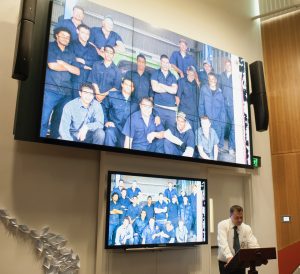 Dirrum Themes and Speakers Over the Years
Dirrum Themes and Speakers Over the Years
2013: Beyond good intentions
Akram Azimi, Alesha Brown,Valerie Browning, Rev Dr Scott Cowdell, Jackie Lauf, Sharyn Munro, Francis Owusu, Duncan Smith
2014: Be the change
Sarah Bachelard, Tim Boston, Dave Burnet, Marcus Dawe, Molly Harriss Olson, George Huitker & Junk Sculpture, Maria Neves, Paul Porteus, Matt Pye, Michael Sheldrick and Franki Sparke
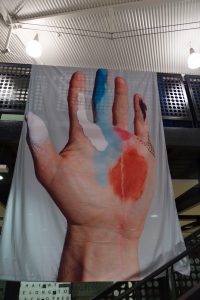 2015: Living into our names
2015: Living into our names
Tim Boston, Nigel Brennan, George Browning, Abel Guterres, Kerryn Higgs, Juliao dos Santos, Emma Macdonald, Karen Middleton, Francis Owusu, Emma Pocock, Micaela Sahhar, Takao Sakae, Jordy Silverstein and Richard Stirzaker
2016: Igniting action
Akram Azimi, Fr Frank Brennan, Ryan Carters, Kirsty Sword Gusmão, Megan Mitchell, Shea Spiering, Joseph Shifra, Rachael Stevens, Jessica Watson and Nipuni Wijewickrema
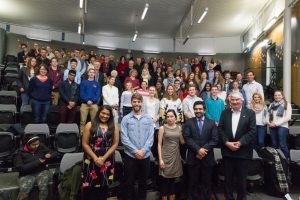
2017: For the common good
Yassmin Abdel-Magied, Sam Bailey, Sarah Bachelard, Toby Gunn, Holly Ransom, Michael Sheldrick, Richard Stirzaker and Mark Tedeschi
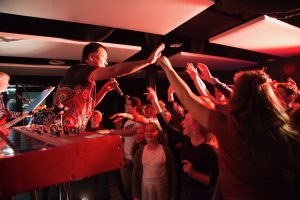
2018: For the common good: truth-telling and power; shared sustainable prosperity
Emma Adams, Denis Ginnivan, Eileen Deemal-Hall, Steph Gabriel, Peter Greste, Ellen Jacobsen, Matt Stocks, Gillian Triggs and Kirsty Windeyer.
Henry Miller (Radford student, participant in Gamilaraay trips 7 & G10)
There exists a divide in this country – a divide that leaves hundreds of thousands of people of our generation, facing the world with no hope for a better future – a divide that has become increasingly impossible to cross.
Behind this divide, there exist immensely complex problems that we cannot pretend to fully understand. Not understanding is no excuse for not trying. I dream of a straightforward fix. Unfortunately, it is far too late to be so simple.
It is easy for us, in our position of relative privilege and good fortune, to turn a blind eye and plead ignorant to the injustice which does not directly affect us. It is easy for us to judge others, when we have no concept of the harsh realities that dictate their lives. I dream of a world where we do not.
Most importantly I dream of a future where opportunity and choice in the life you lead are not governed by your place in society which you had no say over.
I dream that in the future, programs that provide a way across this ever-growing divide for those who have been left behind, will have their place cemented in our education system. A future within our lifetime, where everyone is at least given the chance, to cross the divide.
